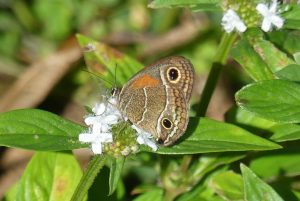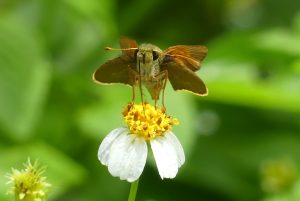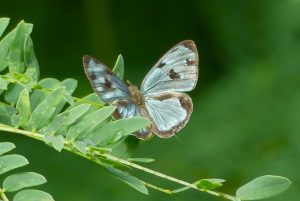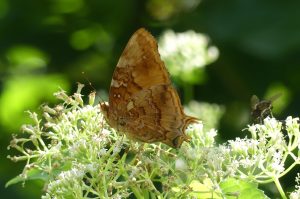Mariposas of the Dominican Republic
Peter Hall, advisor to eButterfly
If you are looking to escape from a northern winter, and also to kick-start your butterfly season, a visit to The Caribbean may be your answer. Never having been to the Dominican Republic (DR), I opted for a flight from Toronto to the Samana Pensinsula on the north coast of DR in late February.
I chose a small, boutique hotel on the ocean at the edge of the village of Las Galeras. I also chose not to rent a car, but to simply walk as many local roads from the hotel as possible. After a week, I had observed and photographed many more butterfly species than anticipated. During that time, I recorded 48 species, including 15 lifers, eight of which were Hispaniola (DR shares the island with Haiti on the west) endemics.
As with other islands in the Greater Antilles chain, from Cuba and Jamaica in the west to Puerto Rico in the east, Hispaniola shares a number of Antillean endemics, but it is also estimated that 60 percent of its butterfly species are Hispaniola endemics. The most interesting group of these are members of the satyr (Satyrinae) genus Calisto. There are as many as 40 different species in this genus on the island (the number still under debate by experts), but most are rare and evolved in isolated populations in the mountain ranges of the central parts of the island. Only four of this group are considered widespread and also found in the lowlands. I managed to find three of these, rather common, near my hotel (photo 1, Confused Calisto (Calisto confusa).
The skippers are also well represented in the DR and I managed to find 16 species. A few were abundant and widespread continental species, but some were island endemics and a number, like the Haitian V-mark Skipper (Choranthus haitensis) (photo 2), I only saw once.
I had hoped to find some of the endemic swallowtails, but only managed to observe two of the commoner species, Polydamas (Battus polydamas) and Lime (Papilio demoleus). The latter is of interest because it was introduced from its African homeland to the Greater Antilles and finally reached Hispaniola in 2006 where it is now rather widespread.
My most interesting sighting was of a Nymphalid species, the Four-spot Sailor (Dynamine postverta), (photo 3) that I could not find in any of my literature sources that I had available to me. I found it at one site along an abandoned road and saw up to 10 individuals. Further research on my return home found that there were a number of Hispaniola sightings of the species on iNaturalist, the first in late 2019. Where it came from is a mystery because the closest populations are Cuba, where it was introduced and is considered rare, and Central America. A number of other Antillean endemic Nymphalids, such as the Antillean Mapwing (Hypanartia paullus) (photo 4), were also seen.
All observations from this trip have been entered into eButterfly.
Selected literature sources consulted include:
Meininghaus, I.G., Butterflies of the Dominican Republic and Haiti, 2018, self-published, Germany (field- guide size with useful photos, but not a complete listing of all species and the flight dates and species maps are questionable).
Schwartz, A., The Butterflies of Hispaniola, 1989, University Presses of Florida (large hardcover with very thorough coverage of all species known at the time, but no species photographs).
Smith, D.S., L.D. Miller and J.Y. Miller, The Butterflies of the West Indies and South Florida, 1994, Oxford University Press, New York (Large format with detailed information and accurate painted plates, but includes all Caribbean species without country checklists.



